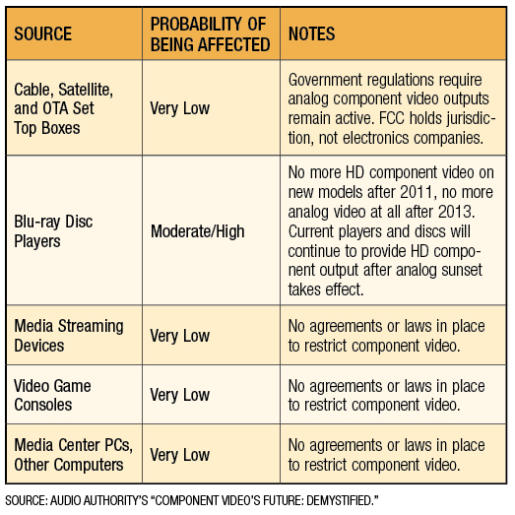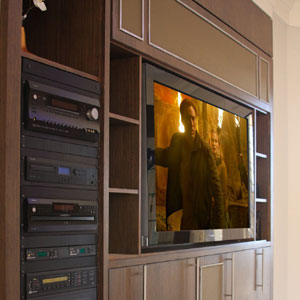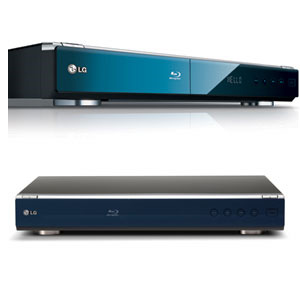How concerned should integrators and consumers be about restrictions on component video outputs affecting Blu-ray players?
The impending so-called “analog sunset” has been touted as the next big thing affecting the custom electronics industry.
Whether or not that’s hyperbole, it’s certain that there are things integrators need to know about restrictions being imposed by the Advanced Access Content System (AACS) licensing agreement — especially in regards to Blu-ray playback.
If savvy clients haven’t already begun asking questions about whether or not they should throw out their component cables, they soon will. Integrators need to know what to tell them and how to react.
Right now integrators can allow clients to view content off Blu-ray discs using an analog component video output on a Blu-ray player. But according to the AACS licensing agreement, after Dec. 31, 2010, no new designs may be introduced with hot HD component outputs; existing designs can be manufactured and sold through Dec. 31, 2011. No Blu-ray players with hot HD component outputs may be manufactured or sold after that date, but they can still output SD resolutions through 2013.
That doesn’t mean that you can’t use Blu-ray players made before Dec. 31, 2010, for viewing content off Blu-ray discs using an analog component video output. Meanwhile, in-stock models made before Dec. 31, 2010, with component inputs capable of HD output can continue to be sold through 2013.
“I recently heard a competitor state that they were going to purchase as many older [Blu-ray] players as they could afford to put off dealing with the changes for as long as possible,” says CEDIA chairman Ken Erdmann, owner of Springville, Utah-based Erdmann Electric. “That will not solve the problem and is rather shortsighted.”
Indeed, after January 1, 2011, Blu-ray disc makers can include an “Image Constraint Token” (ICT) that disables HD over component video down-converting the HD capable input to SD while that particular disc is in the drive. Existing discs in a customer’s collection without the ICT, however, will continue to provide HD component output with no change. The token is only disc-based, so discs with no ICT will operate the same as always (allowing 1080i component out).
Erdmann speculates that Blu-ray titles released years earlier could even “include ICT for those titles manufactured after the 2011 implementation date. A client could be very unhappy if they were used to watching a favorite title for years that when they replaced the worn or damaged disc with a newer version of that title it no longer looked as good or possibly would not play at all.”
Is Analog Fading to Black?
“Analog Sunset” is a term that is actually used in the AACS license agreement:
2.2.2.1 ANALOG SUNSET – 2010. With the exception of Existing Models, any Licensed Player manufactured after December 31, 2010, shall limit analog video outputs for Decrypted AACS Content to SD Interlace Modes only. Existing Models may be manufactured and sold by Adopter up until December 31, 2011.
2.2.2.2 ANALOG SUNSET – 2013. No Licensed Player that passes Decrypted AACS Content to analog video outputs may be manufactured or sold by Adopter after December 31, 2013.
Source: The AACS Final Adopter Agreement, available at http://www.aacsla.com.
At the very least, this legal language will leverage installers with some frustration, according to Fred Harding, who does sales and technical support for distributor Capitol Sales.
“It will cause stress for folks who are installing Blu-ray players over the next year who aren’t prepared. Worst case will be down the road, when manufacturers of other HDMI-equipped products stop putting analog outputs on their devices based on economic decisions. In that case, it will be the absence of connections rather than a mandate that hurts. I’d start planning if it were me.”
However, points out Trent Davis, Audio Authority’s product manager, manufacturers alone can’t always decide when to stop putting technology on their devices. He cites, for example, that many components still are required by the FCC to have FireWire ports even though the technology isn’t commonly used anymore.
Still, the AACS provisions will affect integrators that “have used the component video safety net” because they’ll “be forced to come to terms with the HDMI output,” says Erdmann.
“The loss of 1080i video brought about by the implementation of the ICT will be unsatisfactory to our clients. Even worse, integrators unwilling or unable to deliver the best quality video by using the HDMI output might find their clients looking elsewhere to satisfy their desires for the best quality video and audio in their systems. As time goes by and more of the provisions [are] allowed and implemented under the AACS licensing agreement, the unprepared integrator will face even greater challenges.”
Is the Issue Over-Hyped?
Audio Authority, makers of HMDI and component video distribution systems, switchers and adapters, matrix switches, recently issued a whitepaper, “Component Video’s Future: Demystified,” because there is a lot of misinformation out there, says Davis.
He’s not saying it’s much ado about nothing, but he says the facts are becoming blurred amid all the speculation.
The bottom line, according to Audio Authority, is that component video isn’t going away — but its role will be changed, even mitigated. “Some content sources will be experiencing some changes in the way they are required to control component video output, while others are under no threat from pending restrictions,” writes the company.
Extron Electronics, a manufacturer of A/V components including matrix switchers and cables, also issued a whitepaper on the topic, “Analog Sunset Demystified.” The company’s stance is that even with the impending restrictions, “use of legacy components already installed or the design of systems using products that both have analog and digital outputs will be around for quite some time,” says Joe da Silva, director of product marketing.
“A/V integrators have the choice to design systems using a ‘hybrid’ approach or transition all signals to a digital format. The hybrid design for digital and analog distribution can be much more cost effective than an all-digital approach. A/V integrators who incorporate high-definition protected content and playback of Blu-ray disc format into their designs will certainly be influenced by the restrictions associated by AACS provisions.”
What about Content?
The ICT has actually been around for a while, Audio Authority points out, but it’s not known to have been used on a mass-released Blu-ray disc. Let’s take a look at AACS’ specific ICT and Digital Only Token (DOT) language:
SEC. 3, 1.3.2 Content Participants/Providers shall not, prior to December 31, 2010, direct Licensed Content Producers to embed the Image Constraint Token in Licensed Content Products offered for sale or other distribution in a country in which there was a government or quasi-government regulation or equivalent prohibiting the use of an Image Constraint Token, or equivalent, for scrambled or encrypted content as of November 30, 2005.
SEC. 3, 1.4 If Content Participant/Provider has directed that the Image Constraint Token and/or Digital Only Token be set with respect to a particular LCP (Licensed Content Product) Unit, then the fact that such Image Constraint Token and/or Digital Only Token (as applicable) is set shall be disclosed by the Content Participant/Provider to the consumer either (i) on such LCP Unit’s product packaging; or (ii) only in the case of a consumer product, by other reasonable means that allows the consumer to be aware at the point of initial purchase that the Image Constraint Token and/or Digital Only Token (as applicable) is set with respect to such LCP Unit.
1.2.1 Content Participant/Provider may assert the Digital Only Token only with respect to (a) Non-Consumer Products and/or (b) LCP Units Released in a given country within the first six (6) weeks after the first Theatrical Release of substantially similar Digital Entertainment Content in such country, provided that in the event of the circumstances set forth in this part (b), within six (6) months after such first Theatrical Release, Content Participant/Provider shall Release in such country LCP Units containing a version of such Licensed Content Product that does not assert the Digital Only Token.
Audio Authority points out that the DOT only applies to non-consumer content and for licensed content released on Blu-ray disc within six weeks of the theatrical release “with the caveat that non-DOT versions of the content must be released within six months.”
The effects on Blu-ray, however, while significant, aren’t the entire story. Speculation abounds that the AACS licensing agreement affects cable and satellite boxes, media streaming devices, gaming consoles, media centers and computers.
It’s not true, though, says Davis, unless those devices include Blu-ray players. “A DirecTV box, for example, is not an AACS licensed device and is not affected at all by the provisions of the AACS Analog Sunset. It is, however, affected by the FCC’s SOC [Selectable Output Control May 2010] ruling, but the FCC is the authoritative body in that case, not the AACS licensees.”
So, with some help from Audio Authority’s whitepaper and other authorities, let’s take a look at effects on different content sources.
Cable, Satellite Boxes
These content sources shouldn’t be affected much by the AACS licensing agreement, according to Audio Authority. The Federal Communications Commission (FCC) oversees these components and federal law disallows content providers from turning off component video outputs.
The one exception to this rule, Davis says, is the aforementioned SOC ruling. It “allows deactivation of set-top box analog outputs for very specific content: first-run movies that are still in theaters.”
Meanwhile, the FCC also tells cable and satellite companies not to allow commands to turn off component outputs from being including in their content delivery signals, preventing content providers from restricting output on their own.
So component video should remain applicable to cable and satellite boxes. However, that could change, Harding says. “I think in the future the cable and satellite boxes will drop the jacks based on manufacturing savings. I’m suggesting worrying.”
Erdmann takes a similar stance. “It is my opinion that there is nothing stopping content owners from imposing similar requirements on any provider wishing to provide 1080p video,” he says.
“ICT is inserted in the data stream that allows the decoding of the video and which resolution is allowed where. Any non-HDCP-protected output on any cable or satellite box could have ICT implemented on it. It wasn’t too long ago that we started losing RF outputs on high-definition cable boxes.”
Erdmann has the same skepticism regarding the DOT provision. “I know that DOT is reserved for new business models, but who is to say that cable and satellite high-definition programming would not fall under these new business models? DOT could be used to set day-and-date release information or to limit high-definition content in places where DOT was not in use.”
Davis disagrees that there is nothing stopping content owners from imposing restrictions. “Since the FCC regulates analog outputs of set-top boxes, there’s no reason to believe these sorts of changes will be allowed, and they’ll certainly not go unchallenged. It’s not a decision that’s exclusively in the hands of manufacturers. For example, the FCC made a ruling in 2004 that required FireWire ports be included on future set top boxes, despite the objections of content creators and cable companies.
“The ICT and DOT simply do not and cannot affect cable and satellite TV,” Davis adds. “The entire AACS license applies only to products that use AACS encryption. To imply that cable and satellite companies, whose products are not AACS licensed, are beholden to the industry agreement signed by a bunch of other companies is incorrect.
“Selectable Output Control’ is the appropriate term for cable and satellite set top boxes, and that feature is regulated strictly by the FCC. Only one exception has been made — the SOC can be used on first-run movies that are still in theaters,” Davis continues. “Aside from that, content providers have denied the ability to shut off analog HD outputs for years, and the FCC has given no indication they will relent.”
Media Streaming
Vudu, Apple TV, Roku and other media streaming devices aren’t affected, according to Audio Authority.
Component video should remain applicable to media streaming devices, but again, Harding suggests that this could change.
Erdmann adds that, “As long as you are happy with low-resolution video from those devices it probably won’t have an impact. The fact is we hook these devices up to large flat-panel displays and projectors with HDMI, we purchase HD versions of some titles from iTunes. It is unlikely that our clients who are using these services for content will be happy with anything less than the highest resolutions possible.”
Davis, however, says it’s not an either-or issue. “HD video is available from both HDMI and component outputs on these devices and there are no laws, licensing agreements or other regulations in place that will restrict them at this time.”
Gaming, Media Servers and Computers
Although gaming consoles aren’t affected, in theory, by the AACS licensing agreement, some gaming devices play Blu-ray discs, Audio Authority points out.
Sony’s PlayStation 3, for instance, must abide by the terms of the AACS licensing agreement as it pertains to playing Blu-ray content. However, other functions — including video streaming and gaming – shouldn’t be affected.
Media servers and computers, meanwhile, don’t use a lot of analog outputs anyway, but the AACS licensing agreement won’t seem to require shut-off of VGA and component video outputs.
“Our clients will not be satisfied with anything less than the best performance possible,” says Erdmann, referring to gaming consoles, media servers and computers. “They will have Blu-ray video to compare the video these devices output to. It will not be acceptable to them. Most of these systems have Blu-ray in them already, so integrators must be able to deal with the challenges that come with HDMI.”
By Tom LeBlanc
http://www.cepro.com/article/analog_sunset_ce_pros_weigh_in/
Custom Installation Services, LLC – “We may be a few dollars more than the competition, but we are a million times better”.





 How to work with your custom electronics professional to ensure that your project is successful.
How to work with your custom electronics professional to ensure that your project is successful. You won’t find a $78 Blu-ray player on this HTSA-approved electronics gift list.
You won’t find a $78 Blu-ray player on this HTSA-approved electronics gift list.